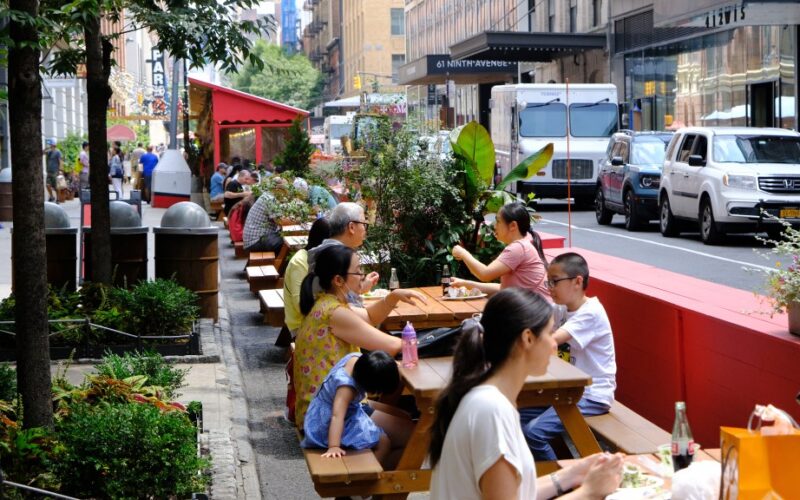It’s not an April Fool’s joke — it’s the depressingly diminished April 1 return of outdoor dining to New York City’s streets, a great innovation reduced to a sliver of a shadow of its former self thanks to a bad deal pushed through by Speaker Adrienne Adams and the City Council, with the unfortunate assent of Mayor Adams.
One of the best things to come out of the COVID pandemic, which shook New York City to its foundations in so many ways, was the creative use of curb space. Rather than just using streets to store cars, thousands of restaurants built makeshift structures and set up shop outdoors, injecting new life into commercial strips across the city.
At the peak of outdoor dining, there were an estimated 13,000 such sheds, and they ran the gamut. Some were beautiful, some were ramshackle. When the pandemic ended and it was time to reexamine a system that had emerged in the thick of a public health emergency, government needed to find a way to learn from what worked — but not throw out the baby back ribs out with the dishwater.
What should have happened was ensuring that all sheds were accessible to people in wheelchairs; dealing with persistent complaints that some sheds turned into rat magnets; creating strong standards for what they ought to look like; perhaps charging restaurants a nominal fee for the use of public space; and creating some neighborhood process for reviewing the acceptability of applications without giving too-easy veto power to community squeaky wheels.
What happened instead was a major policy shift that stacked the deck against outdoor dining in just about every imaginable way.
The biggest mistake was requiring sheds to be removed each Nov. 29 and get set up again every April 1. That means although sheds can legally occupy the street 66% of the calendar’s 365 days — meaning that it gives a few thousand cars more street parking for a third of the year — the structures must be perennially broken down, stored and set up again. That adds thousands of dollars in costs to restaurants already operating on thin margins.
That wasn’t all. Rather than replace the free-for-all with a streamlined review process, restaurants seeking approval for new sheds hit delay after delay, bureaucratic obstacle after bureaucratic obstacle. Some were addressed by the Adams administration, but many remained.
And in the name of empowering communities to have a say, the law now gave community boards undue power to snarl applications — power many of them proceeded to abuse. One application to put 18 tables outside Le Dive on Canal Street went to a full City Council vote earlier this month. The Council said no.
Add it all up, and the city is left with a measly 600 streetery setups, along with 2,000 sidewalk cafes (which are permitted to operate year-round). That’s bad news for restaurants, the people they employ and the neighborhoods they help shape. It’s bad news for people who enjoy eating al fresco.
We suppose it’s good news for people in cars who’d like a few extra places to park curbside in the cold-weather months — but a healthy city should never let the needs of drivers dictate the use of street space. Every mayoral candidate running should be asked: What will you do to revive outdoor dining?








